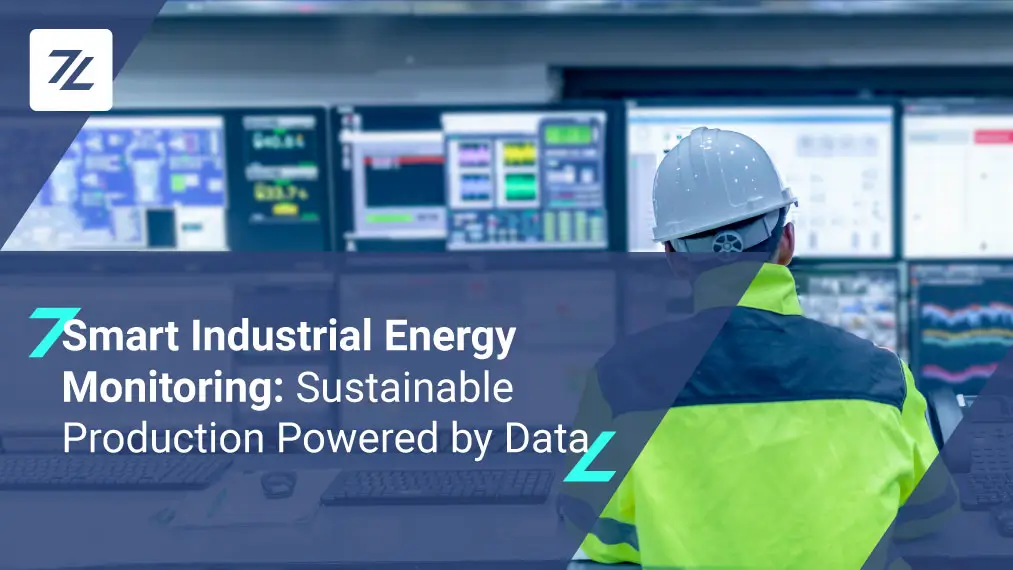Metal production is extremely energy intensive. In most cases, this requires using fossil fuels. If you want to learn more about energy-efficient practices for the metal industry, and how IoT can help you bring your energy costs down, keep reading.
In this article, we will see how to create renewable energy from heat, major energy source alternatives, and how energy can be saved by recycling metal during production.
If you would like to learn more about improving production efficiency in the metal industry, take a look at our previous post.
Recovering energy from metal production
The process of refining and smelting metal ore uses large ovens, which generate vast amounts of heat and pressure – and this can be used to produce electricity plus recover some lost energy during the production process.
Taking advantage of exhaust heat is important because of the impact of high energy costs on your overall budget. Additionally, there are environmental benefits generated.
In particular, energy recovery is applicable before or after abatement. The technique used to recover heat is variable and depends on:
- the potential uses for heat and energy generated on or near the site,
- the potential for gas emission
- the scale of operation.
Taking these parameters into consideration, you can determine what kind of energy recovery is best suited for your production.
Alternative energy sources
Looking at employing alternative energy sources is not only a sustainable approach but also a cost-effective one.
Let’s look at three alternative energy sources:
- Solar – the energy given off by the Sun and from photovoltaic or solar thermal panels can be transformed into electrical or thermal energy.
- Wind – an energy source that uses the kinetic capabilities associated with the wind to create electricity using wind turbines.
- Hydrogen – storable and provides large amounts of energy per unit mass without generating CO₂ emissions during combustion, and is, therefore, very sustainable.
These alternative energy sources, perhaps, are not reliable enough for the whole production process right now but they are a great way to cut down energy consumption in auxiliary systems.
Recycling uses less energy
Recycling metal is always a better option, energy wise, than extracting ore. For example, recycling steel uses 75% less energy to process than iron ore; furthermore, recycling aluminum uses 95% less energy. Those are substantial energy savings.
Looking closer at aluminum production, the main issues are that since aluminum is produced from aluminum ore, there are extensive processes that need to take place for it to be separated into pure aluminum metal. So, of course, this requires large amounts of heat and electricity.
Even though the amount of energy saved depends on the type of metal, there is always an energy savings involved. It is important to know that recovering precious metals such as palladium, platinum, gold, copper, lead, silver and other valuable metals becomes economically viable only if enough scrap is collected.
Furthermore, recycling metal has a great positive impact on the environment for two reasons.
First, the collection process for metals differs from that for other materials because of its higher scrap value, so recycling metals can remove scrap metal from landfills.
Second, there’s a continuous need for metals, but the process for getting new metals is not only expensive, but problematic for our environment. Metals are excavated from the earth by mining and, over time, the areas being excavated can be depleted, leaving excavation holes behind.
Monitoring auxiliary services in metal production facilities
Reducing energy costs on light and air conditioning systems is very important, especially for the metal industry. Energy is around 10% of operating costs.
Energy efficiency improvements also reduce the energy cost per unit of product. It is a practical method for growing your market share.
When calculating lighting, these practices can bring your energy consumption down:
- Use smart occupancy sensors – this creates up to 90% energy reduction
- Determine overlit areas, and reduce the number of lamps
- Replace magnetic ballasts with electronic ballasts. Electronic ballasts require 12% to 30% less power than magnetic ballasts.
- Reduce lighting system voltage. Voltage controllers reduce voltage and save energy in HID or fluorescent lighting systems without losing light.
- Replace metal halide HID with high-intensity fluorescent lights. High-intensity fluorescent systems yield 50% electricity savings over standard metal halide HID.
Furthermore, using IoT technology to link HVAC systems (Heating, Ventilation and Air Conditioning) helps manufacturers, contractors, and end users monitor their performance and detect issues before they become major problems that create outages.
IoT sensors can send back alerts when they detect a problem, or when energy consumption exceeds a certain threshold limit.
Conclusion
Concluding, we can say that it is important for metal industries to understand the possible sources of energy saving in order to achieve effectiveness and efficiency.
In addition to energy recovery, we can achieve benefits and advantages through predictive plant maintenance in metal industries. If you want to learn more about this topic you can read our blog post.
Share This Story, Choose Your Platform!
Follow Zerynth on
Latest Posts





